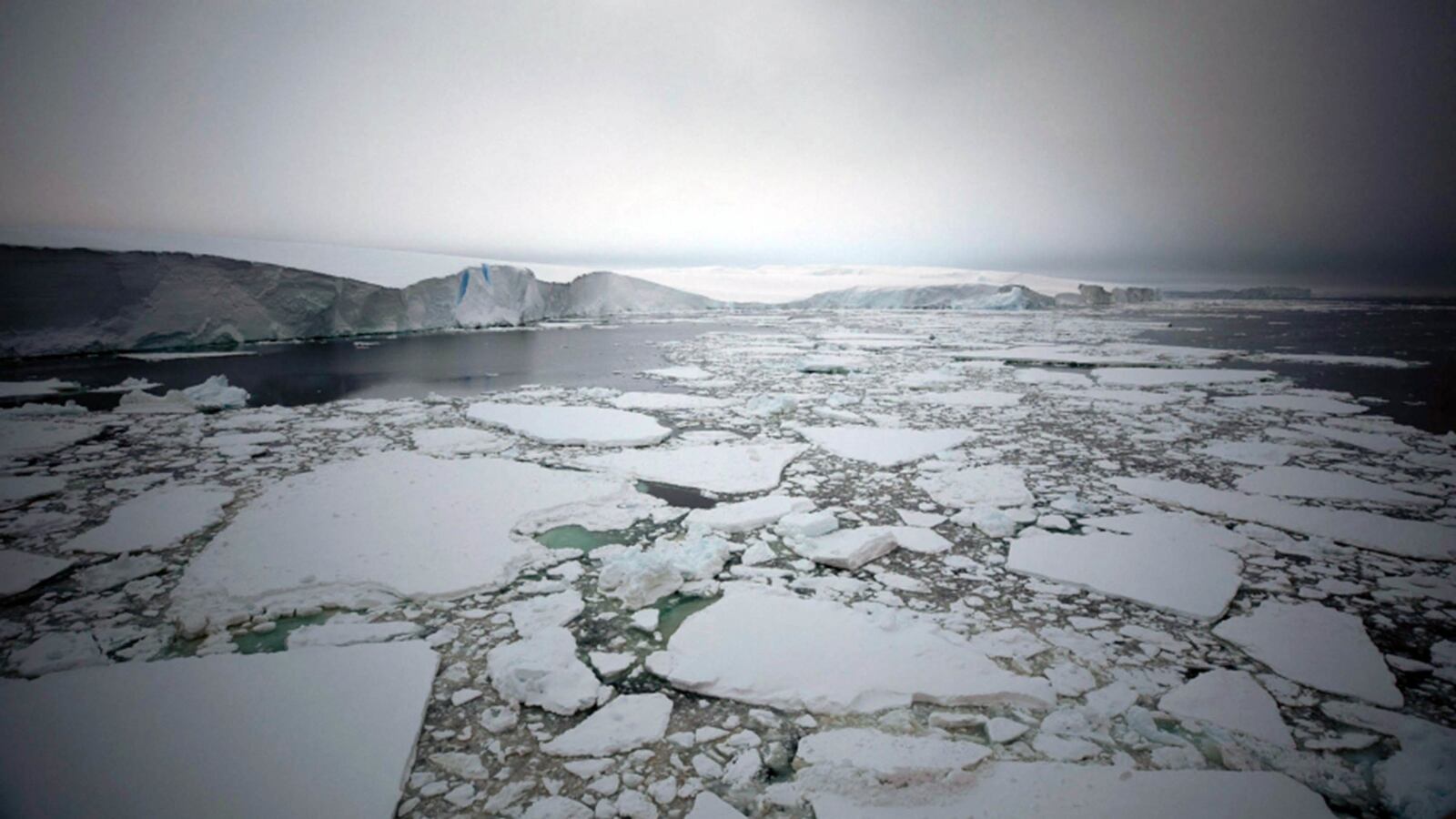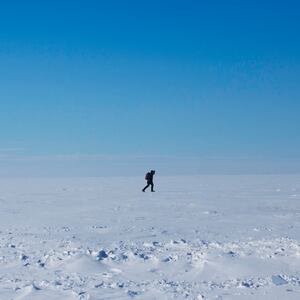I spent the entire day we reached Thwaites Glacier in my pajamas.
The ship I was on was set to be the first ever to sail across the face of the massive West Antarctic glacier, and we were scheduled to arrive at 4 a.m. But after a month on an icebreaker in the Southern Ocean, a month of mechanical problems, a medical evacuation, and countless schedule changes due to extreme weather, I’d learned that very little goes according to plan in Antarctica. Every Plan A needs a Plan B.
So I set my alarm for 4 a.m. and pulled my insulated Carhartt overalls over my flannel pajama pants. Plan A was to see Thwaites, a glacier the size of Florida whose collapse could eventually trigger about 11 feet of sea level rise. If our schedule had changed, Plan B was to go back to bed.
Turns out I didn’t need Plan B.
I walked up to the bridge and saw a craggy ice cliff six or seven stories tall looming a few hundred feet to my left. It seemed to glow an otherworldly blue in the foggy, pre-dawn light. The captain and chief mate silently navigated along its face, using a spotlight to search for stray icebergs.
I watched in quiet awe, enthralled by the ice and this view that no one had ever seen before. We were the first ship to ever reach the central part of Thwaites Glacier. When a scientist on the night shift joined me up on the bridge, we spoke in whispers without quite knowing why.

Carolyn Beeler poses for a photograph in front of Thwaites Glacier in the early morning hours of Feb. 26, 2019, the first day the research team aboard the Nathaniel B. Palmer arrived at Thwaites Glacier.
Courtesy of Carolyn Beeler/PRI’s ‘The World’I’m the environment reporter for PRI’s The World. For over a decade, I’ve wanted to report from Antarctica. Last summer, I applied to cover the Nathaniel B. Palmer’s cruise to Thwaites, which marked the beginning of a five-year, roughly $50 million joint US and UK research project. The expedition was part of the race to discover how fast Thwaites Glacier is melting, and what that will mean for sea level rise over the next century.
Thwaites itself could contribute up to two feet to global sea levels, but it’s what behind it that scientists are really worried about. Thwaites is like a cork in a wine bottle—when it melts, it could trigger the collapse of a large portion of West Antarctica, equal to roughly 11 feet of global sea rise.
The expedition set out from Punta Arenas, Chile, at the end of January. The first day aboard felt like the first day of college. I found my cabin, met my roommate, checked out the galley.
Once we cleared the southern tip of South America and hit open ocean, 20-foot waves in the Drake Passage tossd the Palmer around like a dinghy.
One day, about a week into the trip, keyboards and computer mice were skittering across my desk in the computer lab. Chairs were crashing from one side of the room to the other. The ship hit a huge wave and rolled, launching me out of my chair and onto the ground.
The bruise on the back of my head was the first reminder of the power of the ocean. It wouldn’t be my last.
This same ocean is what’s responsible for melting Thwaites Glacier.
Winds are now pushing a layer of warm ocean water up underneath part of the glacier that extends out into the sea and melting it, faster and faster. If that part breaks off, the entire glacier would destabilize.
On the day we reached Thwaites, many of the roughly 60 scientists, staff and crew started streaming up to the bridge around daybreak, eager to see the glacier themselves. It felt like a party on the upper deck as we snapped photos and watched penguins swim near the ship’s bow.
But fairly quickly, the experienced scientists on the ship started saying the glacier didn’t look right.
An ice shelf should look like a sheer, straight cliff of ice. Thwaites … did not.
In places the top had an overhang, like a house with snow hanging off the roof. Elsewhere the glacier slumped down toward the sea, like a sledding hill. As the day progressed, a low fog enveloped the ship. We passed a hill of ice covered in geometric shapes. It looked like a graveyard from a horror movie — the stones askew from the undead shoving them aside.
None of the scientists on the ship had seen anything like this before.
They warned me it’s impossible to judge the health of a glacier just by looking at it. The next five years of research is what will help them unravel its fate.
But I couldn’t shake the image in my head that we were sailing through a glacier graveyard.
Stories from Carolyn’s reporting on Thwaites Glacier will run Mondays on The World radio program through the beginning of July and online at theworld.org/antarctica.







